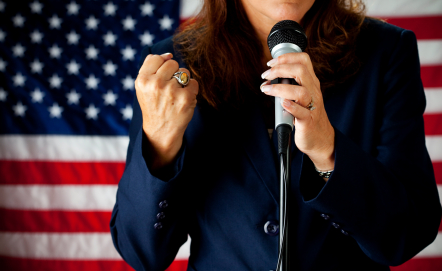The Right Speech Formula For Winning Political Campaigns
Editor’s Note: Today’s guest post was written by Ben Donahower, an experienced campaign operative and award-winning Toastmaster.
Politicians – and their campaigns – too often overlook their audiences. But campaigns that strategically think about to whom the candidate is speaking, and when, get the most value out of political speeches. So how should candidates plan their speeches throughout a campaign?
The best game plan for political speeches follows the campaign plan. Winning campaign plans start with voter outreach among likely supporters, transition to neutral voters, and finally return to the candidate’s base.
Political speeches should follow the same pattern because they reinforce campaign phone banks and canvasses and because it’s a formula for giving the right speech, at the right time, when the candidate has the right skills.
THE RIGHT SPEECH
A persuasive speech takes time. Candidates can use friendly audiences as a proving ground for introductions, key points, conclusions, and more subtle elements of a stump speech. A candidate’s base is a forgiving audience, so it’s a perfect group to experiment on without fear of the political consequences.
AT THE RIGHT TIME
Timing is critical on a political campaign. Campaigns should use early speeches to define the candidate and the opponent, and to detail the policies that the candidate will focus on or implement when elected. Unlike the persuasive speeches given to undecided voters over the course of most of the campaign, these early speeches are best suited for voters sympathetic to the cause. As Election Day approaches, the message on the stump changes to getting out the vote. Who is the candidate speaking to when the message is to show up at the polls on Election Day? Supporters, of course!
THE RIGHT SPEAKING SKILLS
Public speaking skills come with practice, and practice comes in two forms: preparation and delivery. This audience strategy helps reinforce public speaking skills like these: Brevity: All other things being equal, a short speech is better than a long speech. Candidates are often speaking at events where they are one of many speakers. In these cases, it’s especially important to be respectful of the time allotted and voters will thank you for it! Speech speed: Early political speeches from candidates usually have a dangerous combination of nervousness and enthusiasm, which manifests itself in very fast speeches. These tips on handling a fear of public speaking will help slow candidates down and so will practicing pauses. The most important the point, the longer the pause. Storytelling: The single most important technique to engage the audience in a stump speech is to tell a story, especially about an individual. Stories are incredibly persuasive without having to speak in terms that alienate people, they are memorable, and they imply more than the sum of the words.
THE AUDIENCE STRATEGY THAT WORKS
Finally, if there is one thing that can throw a wrench in a speech, it’s nerves. Speech-destroying nervousness is relative to the size and type of the audience. Sequentially speaking to supporters, then undecideds, and back to supporters prepares candidates for gradually more nerve racking audiences while complementing the field plan and other moving parts of the campaign.
Ben Donahower is an experienced campaign operative and award-winning Toastmaster. Connect with Ben on his website, Ben Donahower.

Great advice. Brad, you always provide timely direction whether it be from you personally or another expert. You are a terrific resource.